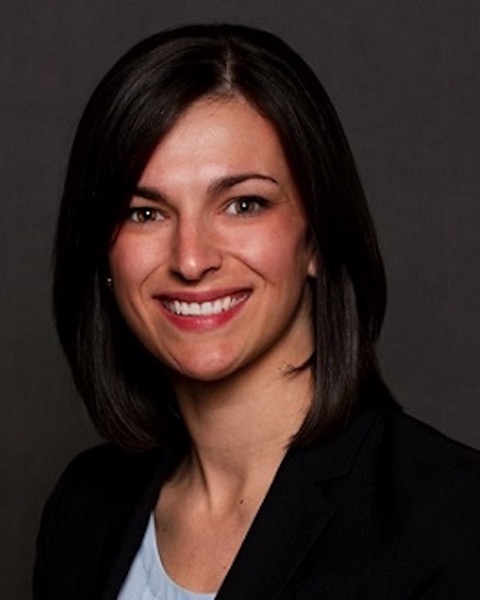Hospital Medicine: Clinical
Category: Abstract Submission
Hospital Medicine: Clinical - Bronchiolitis/HFNC and Newborn Care
122 - Clinical Features Of An Atypical RSV Surge During The COVID-19 Pandemic
Monday, April 25, 2022
3:30 PM - 6:00 PM US MT
Poster Number: 122
Publication Number: 122.415
Publication Number: 122.415
Tabatha Alrayes, Children's Hospital of Michigan, Dearborn, MI, United States; Andrea B. Wait, Children's Hospital of Michigan, Grosse Pointe Park, MI, United States; David Merolla, Wayne State University, Detroit, MI, United States; Priya Spencer, Children's Hospital of Michigan, Troy, MI, United States; Kirby Lampe, Children's Hospital of Michigan, Liberty, MO, United States; Alivia Knol, Wayne State University - - Detroit, MI, Detroit, MI, United States; Pooja Dandamudi, Michigan State University College of Osteopathic Medicine, Northville, MI, United States; Samantha Liu, Central Michigan University College of Medicine, Mount Pleasant, MI, United States; Nirupama Kannikeswaran, Children's Hospital of Michigan, Detroit, MI, United States

Tabatha Alrayes, DO
Attending Pediatrician
Children's Hospital of Michigan
Dearborn, Michigan, United States
Presenting Author(s)
Background: Respiratory syncytial virus (RSV) is a well-known cause of respiratory illness in children which peaks in the winter. However, the coronavirus disease 2019 (COVID-19) pandemic has been associated with a change in RSV seasonality, with an uncharacteristic surge in spring and summer. There is paucity of data regarding the clinical features of RSV infection during this atypical surge.
Objective: Our objective is to describe the clinical features, illness severity, risk factors for severe illness, and outcomes in children with RSV infection during the atypical surge at a tertiary care children’s hospital.
Design/Methods: We performed a retrospective review of patients ≤18 years who tested positive for RSV on a rapid PCR nasopharyngeal swab between March - September 2021 at our institution. Children >5 years of age were excluded. Data was analyzed regarding demographics, history of prematurity or chronic medical conditions, and disposition, including need for intensive care unit (ICU) admission, positive pressure ventilation (PPV) requirement, and hospital length of stay. Severe disease was defined as ICU admission, PPV, or death.
Results: In this study, 6,531 patients underwent testing for RSV of whom 1,100 (16.8%) tested positive. Of the 494 children ≤5 years of age with RSV infection, majority were 6-23 months of age (43.3%), were male (56%), and one third (n=185; 37.4%) required hospitalization. Hospitalization rate was highest in the 0–2 months age group (55.7%) (Fig. 1). Of those hospitalized, 15.9% (n=79) required low flow oxygen, 25.9% (n=128) required high flow oxygen, and 3.0% (n=15) required PPV. None of the children >2 years of age required PPV. Severe disease was noted in 8.5% (n=42) of patients, and children < 6 months of age were more likely to develop severe disease (Fig. 2). Patients with chronic medical conditions (16% vs.7%; p < 0.009) and those who were born premature (15.8% vs.7.4%; p=0.03) were more likely to develop severe disease. There were no deaths.Conclusion(s): Although RSV infection during the COVID-19 pandemic had an atypical summer surge, clinical features were representative of a typical RSV season. Timing of infection did not change the demographics of infected individuals or the risk factors for severity. Infants < 6 months of age had the highest rate of hospitalization and severe disease, with prematurity and chronic medical conditions creating added risk for severe disease.
Fig. 1, Hospitalization Rate By Age.png) p < 0.001
p < 0.001
Fig. 2, Severe Disease By Age.png) p=0.001
p=0.001
Objective: Our objective is to describe the clinical features, illness severity, risk factors for severe illness, and outcomes in children with RSV infection during the atypical surge at a tertiary care children’s hospital.
Design/Methods: We performed a retrospective review of patients ≤18 years who tested positive for RSV on a rapid PCR nasopharyngeal swab between March - September 2021 at our institution. Children >5 years of age were excluded. Data was analyzed regarding demographics, history of prematurity or chronic medical conditions, and disposition, including need for intensive care unit (ICU) admission, positive pressure ventilation (PPV) requirement, and hospital length of stay. Severe disease was defined as ICU admission, PPV, or death.
Results: In this study, 6,531 patients underwent testing for RSV of whom 1,100 (16.8%) tested positive. Of the 494 children ≤5 years of age with RSV infection, majority were 6-23 months of age (43.3%), were male (56%), and one third (n=185; 37.4%) required hospitalization. Hospitalization rate was highest in the 0–2 months age group (55.7%) (Fig. 1). Of those hospitalized, 15.9% (n=79) required low flow oxygen, 25.9% (n=128) required high flow oxygen, and 3.0% (n=15) required PPV. None of the children >2 years of age required PPV. Severe disease was noted in 8.5% (n=42) of patients, and children < 6 months of age were more likely to develop severe disease (Fig. 2). Patients with chronic medical conditions (16% vs.7%; p < 0.009) and those who were born premature (15.8% vs.7.4%; p=0.03) were more likely to develop severe disease. There were no deaths.Conclusion(s): Although RSV infection during the COVID-19 pandemic had an atypical summer surge, clinical features were representative of a typical RSV season. Timing of infection did not change the demographics of infected individuals or the risk factors for severity. Infants < 6 months of age had the highest rate of hospitalization and severe disease, with prematurity and chronic medical conditions creating added risk for severe disease.
Fig. 1, Hospitalization Rate By Age
.png) p < 0.001
p < 0.001Fig. 2, Severe Disease By Age
.png) p=0.001
p=0.001